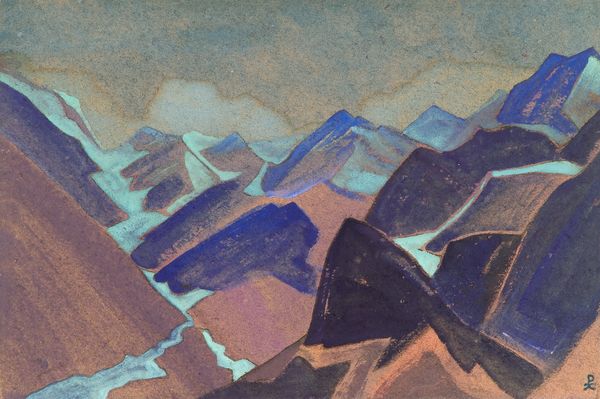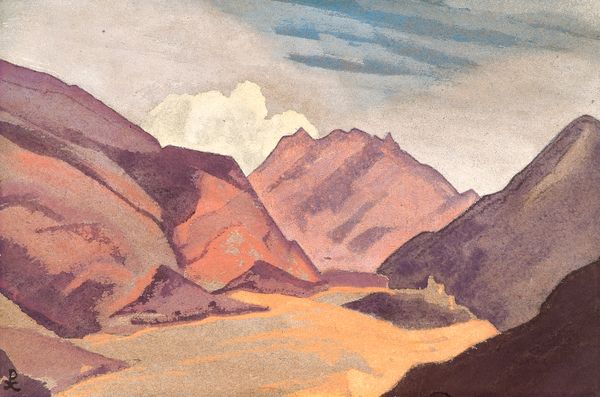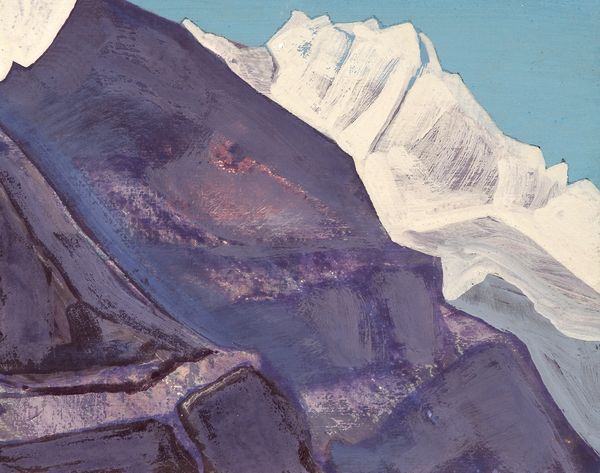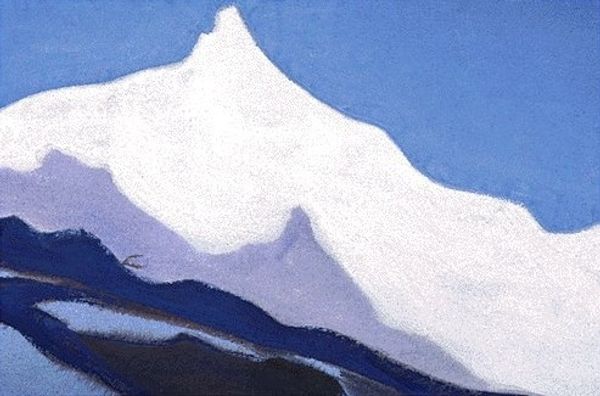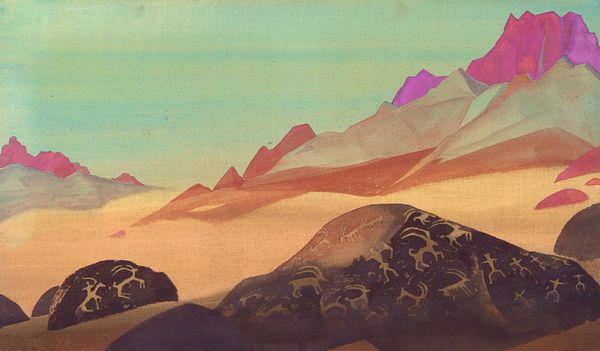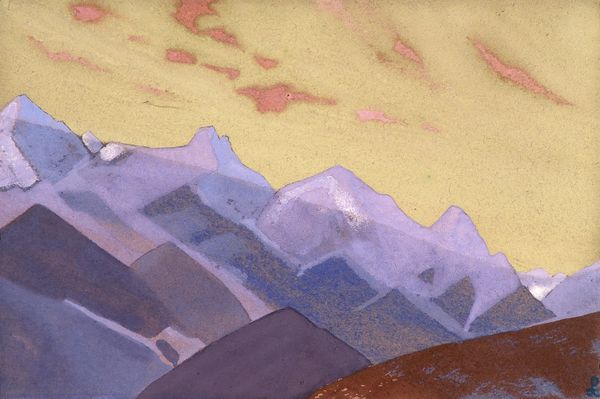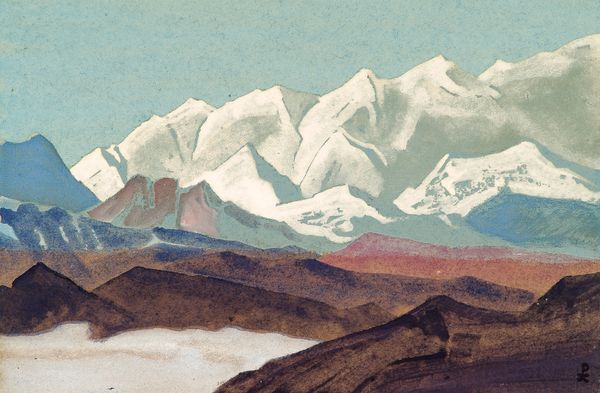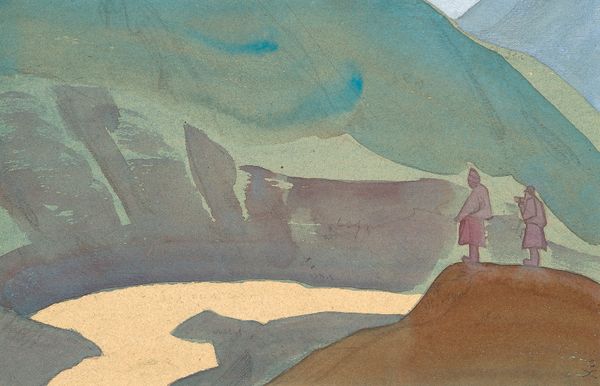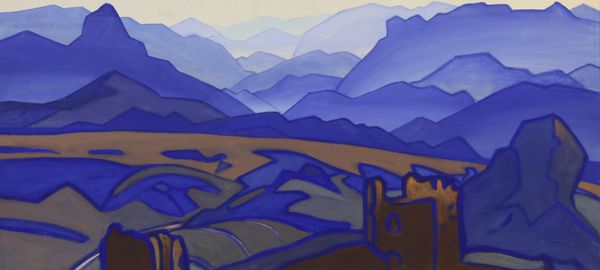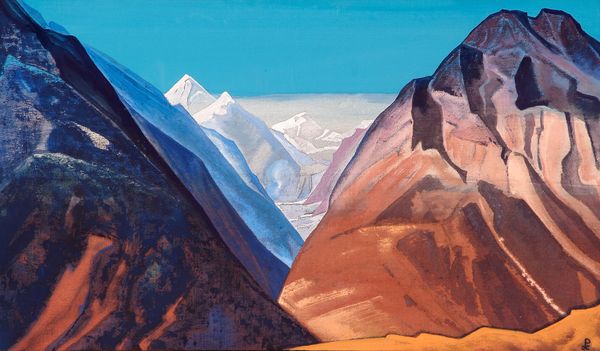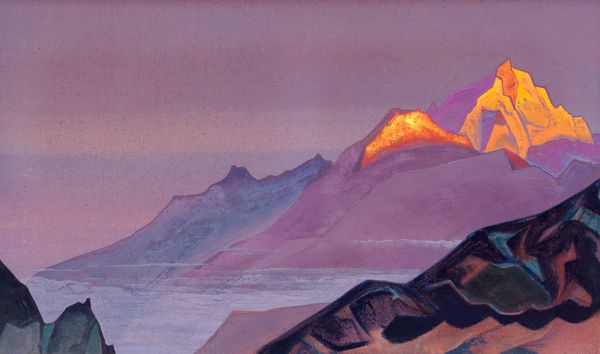
Karakoram. Way to Turkestan. 1936
0:00
0:00
nicholasroerich
Nicholas Roerich Museum, New York City, NY, US
Copyright: Public domain
Curator: Painted in 1936, this is Nicholas Roerich's "Karakoram. Way to Turkestan," a tempera on canvas now housed in the Nicholas Roerich Museum. Editor: Right away, it strikes me as…ethereal. There's this almost dreamlike quality to the stark, simplified forms and the color palette. It feels like gazing into a very beautiful, otherworldly mirage. Curator: Roerich's artistic practice was deeply intertwined with his spiritual and philosophical beliefs, influencing his conviction that art could awaken a sense of universal harmony and cultural interconnectedness, specifically during interwar discord. The Symbolist movement definitely echoes through in his compositions. Editor: Yes! And there's a stillness too, almost meditative. It’s interesting how he uses those blues and mauves to depict the mountains. They’re strong and solid, but somehow, also light and airy. The overall landscape whispers a message of both peace and vastness. Curator: Absolutely, Roerich's paintings should also be regarded within a specific historical context. In the early 20th century, he searched for Shambhala, which can be understood both as a literal geographical quest and as an idealistic utopian aspiration which informed his landscape painting and his sociopolitical efforts like the Roerich Pact to protect cultural heritage sites. Editor: Knowing that gives it a totally new layer, doesn't it? Like he's not just showing us a place, but an ideal. Like the shimmer is literal and symbolic both, about reaching that place of inner harmony that can exist anywhere. The browns of the ground seem really contrasted with that utopian possibility. Curator: Precisely. The choice of materials contributes too; the quick-drying nature of tempera lent itself to the flatness and the kind of shimmering quality, unlike the gloss of oil paints. The flatness denies, somehow, an immediate entry into the scene for the viewer and thus sets a kind of barrier. Editor: I hadn’t thought of that but yes, the viewer remains outside of the vision of possibility. Roerich presents this landscape and what lies beyond those mountains almost as a secret. It’s so compelling. Well, this painting's given me plenty to think about. A quiet invitation to embark on my own internal journey, perhaps. Curator: I agree; I think Roerich aspired to just that effect. It is fascinating how this painting encapsulates so many layers—cultural, spiritual, and political—and how his artistic quest reflects a time of upheaval but also idealism.
Comments
No comments
Be the first to comment and join the conversation on the ultimate creative platform.
